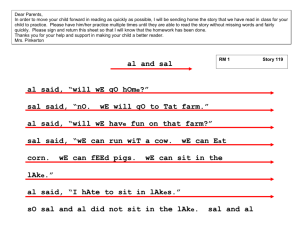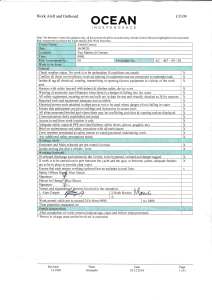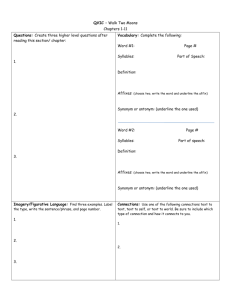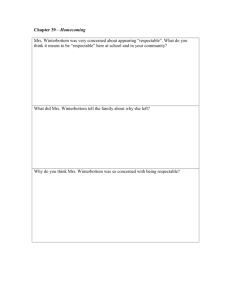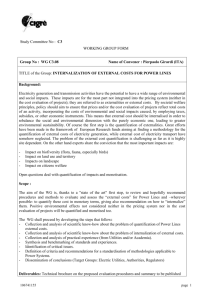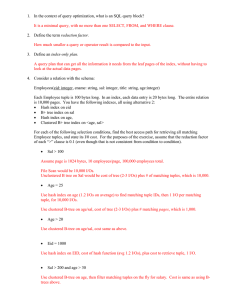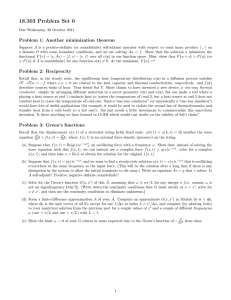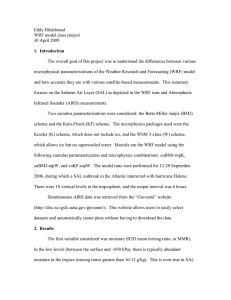Supporting Experimental Procedures: Quantification of SAL in
advertisement
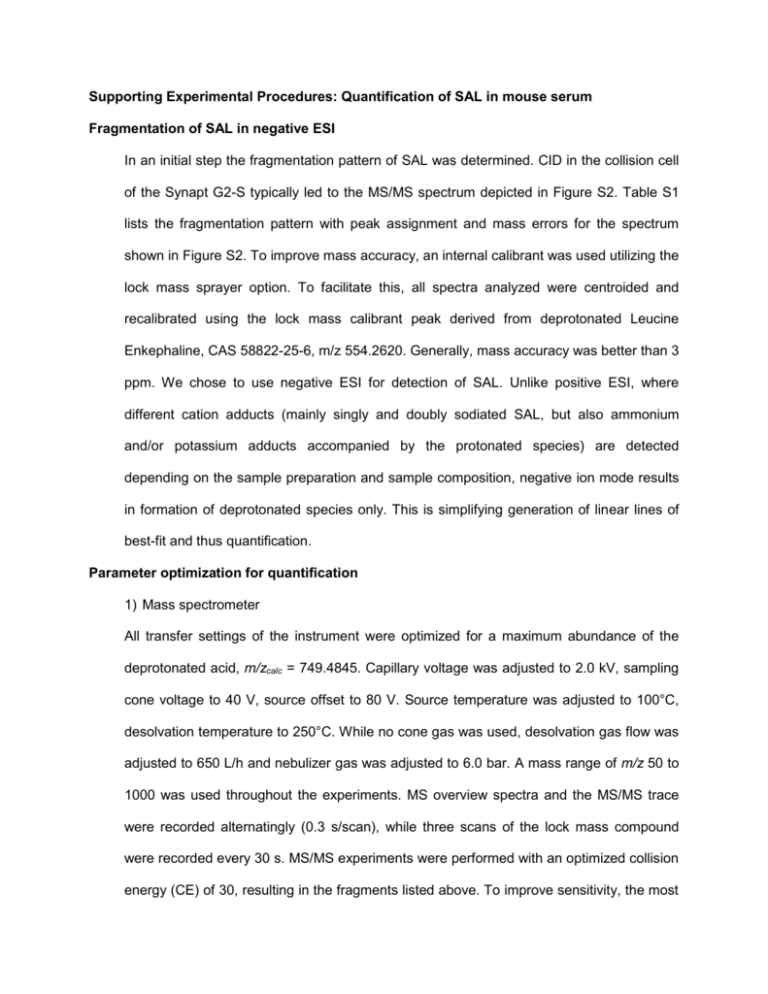
Supporting Experimental Procedures: Quantification of SAL in mouse serum Fragmentation of SAL in negative ESI In an initial step the fragmentation pattern of SAL was determined. CID in the collision cell of the Synapt G2-S typically led to the MS/MS spectrum depicted in Figure S2. Table S1 lists the fragmentation pattern with peak assignment and mass errors for the spectrum shown in Figure S2. To improve mass accuracy, an internal calibrant was used utilizing the lock mass sprayer option. To facilitate this, all spectra analyzed were centroided and recalibrated using the lock mass calibrant peak derived from deprotonated Leucine Enkephaline, CAS 58822-25-6, m/z 554.2620. Generally, mass accuracy was better than 3 ppm. We chose to use negative ESI for detection of SAL. Unlike positive ESI, where different cation adducts (mainly singly and doubly sodiated SAL, but also ammonium and/or potassium adducts accompanied by the protonated species) are detected depending on the sample preparation and sample composition, negative ion mode results in formation of deprotonated species only. This is simplifying generation of linear lines of best-fit and thus quantification. Parameter optimization for quantification 1) Mass spectrometer All transfer settings of the instrument were optimized for a maximum abundance of the deprotonated acid, m/zcalc = 749.4845. Capillary voltage was adjusted to 2.0 kV, sampling cone voltage to 40 V, source offset to 80 V. Source temperature was adjusted to 100°C, desolvation temperature to 250°C. While no cone gas was used, desolvation gas flow was adjusted to 650 L/h and nebulizer gas was adjusted to 6.0 bar. A mass range of m/z 50 to 1000 was used throughout the experiments. MS overview spectra and the MS/MS trace were recorded alternatingly (0.3 s/scan), while three scans of the lock mass compound were recorded every 30 s. MS/MS experiments were performed with an optimized collision energy (CE) of 30, resulting in the fragments listed above. To improve sensitivity, the most intense fragment was chosen. Summarizing, the 749.4845 241.1445 transition was used to perform the quantification. As extraction window 241.1445 ± 5 ppm was used to reduce chemical background. 2) UHPLC condition optimization For the UHPLC separation preceding the MS/MS detection an Acquity UPLC (Waters Corp., Milford, MA, USA) equipped with an Acquity UPLC C18 1.7 µm 2.1x50 mm column, was used. As solvent (A) water/0.1% formic acid and solvent (B) methanol/0.1% formic acid was used. Starting with 50/50 (A)/(B), a linear gradient was applied resulting in a mixture of 10/90 (A)/(B) after 10 min. After washing the column for 10 min with 10/90 (A)/(B) the column was re-equilibrated for 2 min with 50/50 (A)/(B) until the next injection was performed. The samples were stored at -20°C until measured and at 4°C while the sequence was running. The column was operated at 30°C. Using these conditions, SAL elution was detected at 6.99 min. For quantification, an elution window of 6.99 min ± 0.2 min was set. 3) Standard and sample preparation To minimize extraction effects, all standards were prepared in mouse serum. All further treatment was analogous to the treatment of the samples: 3 parts acetonitrile were added to 1 part SAL-doped serum, incubated at room temperature for 10 minutes on a mechanical shaker at 100 rpm, centrifuged at 36000 g for 10 min at 4°C and filtered through a 0.2 µm PTFE syringe filter before analysis. 4) Quantification: With the optimized protocol described above we measured a calibration curve using external calibration (Figure S3). With these preconditions, the concentration of SAL in experimental samples was determined. References: 1. Miao XS, March RE, & Metcalfe CD (2003) Fragmentation study of SAL and monensin A antibiotics using electrospray quadrupole time-of-flight mass spectrometry. Rapid communications in mass spectrometry : RCM 17(2):149-154.
